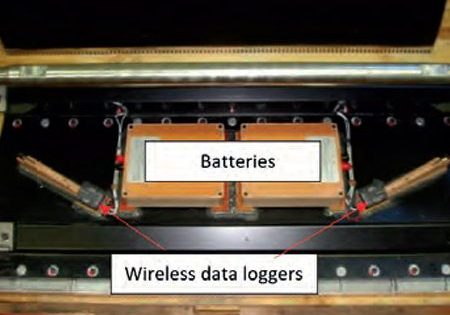A Quick Look at Apta’s Heavy-Duty Escalator Design Guidelines
Dec 1, 2020
Examining the sections in important recommended-practice transit document
Some time ago, your author worked for Montgomery Elevator Co. designing escalators and moving walks. Regularly, engineering would receive specifications for escalators used in what we called
“transit” applications. These escalators would typically require things standard commercial escalators would not. For example:
- More corrosion resistance (special paint coatings and galvanized trusses)
- Heavy-duty/long-life step chains
- Larger step rollers
- Larger drive machines
- Fault monitoring
- Heavier balustrades
There were many other specifications differences. Interestingly, it appeared that a transit agency (I never knew which) developed the specifications, and they were copied by many jurisdictions.
Fast-forward 15 years, and the American Public Transportation Association (APTA) published its first set of heavy-duty escalator recommendations for the transit industry. It includes common-sense ideas, such as escalators used in train stations, bus stations, airports and the like should be tougher than an escalator in a department store. An organization putting together some guidelines that can be used to generate a specification suited for a particular venue requiring a heavy-duty escalator was a long time coming. APTA Recommended Practice, “APTA RT-EE-RP-001-02, Rev. 3,” is available at bit.ly/34iIpvK.
This article will discuss some of the recommendations in the APTA Design Guidelines and occasionally compare them with the requirements in the ASME A17.1 Safety Code for Elevators and Escalators. It is important to remember that the APTA recommendations are not a code or a standard, but a recommended practice. In addition to the APTA recommendations, the units are required to comply with the applicable code — typically, A17.1/CSA B44.
Drawings
APTA recommends that the owner require more than the typical layout drawings. More recommended drawings from the manufacturer include those of all of the major systems, as-built drawings showing any changes from the original design and wiring diagrams. The latter are required onsite by A17.1.
Manuals
APTA recommends that the owner require the installer/manufacturer to supply operation and maintenance manuals. Furthermore, it is recommended that these manuals be far more specific than the manuals usually seen in the owner’s possession. They are to have the items below (and more):
- Disassembly/assembly instructions for major assemblies, including parts lists
- A list of replacement parts, prices and sources
- A preventive-maintenance plan (in most cases, a maintenance control plan [MCP])
- A list and location of safety devices
- Procedures for adjustment of critical components
- Procedures for typical maintenance replacements
- Troubleshooting guidelines
- Lubrication and cleaning information
Maintenance
It is recommended that the installer (typically, the manufacturer) provide a detailed maintenance plan, including the frequency of said maintenance. An MCP is required where applicable. MCPs or their predecessors have been required since A17.1-2000. (Code-required escalator maintenance is specified in A17.1/B44, Requirement 8.6; more specifically, 8.6.8.)
Some escalator owners are not highly trained in the operation of the equipment. It is possible that they are also unaware of A17.1/B44 Requirement 8.6.11.6.1: Escalator and Moving Walks Startup and Procedures. APTA recommends the manufacturer/installer provide at least 40 hr of training for the owner on the proper use, operation and daily maintenance of the escalator.
Training
Training is an interesting and generally overlooked item. Some escalator owners are not highly trained in the operation of the equipment. It is possible that they are also unaware of A17.1/B44 Requirement 8.6.11.6.1: Escalator and Moving Walks Startup and Procedures. APTA recommends the manufacturer/installer provide at least 40 hr of training for the owner on the proper use, operation and daily maintenance of the escalator. In addition, training is recommended concerning failures, malfunctions and emergency procedures. Providing manuals covering the training is also recommended.
Quality Assurance
It is recommended that the manufacturer and lead mechanic have at least 10 years of experience manufacturing and installing heavy-duty escalators.
Spare Parts and Tools
A list of all spare parts required to keep the unit operational (typically, comb segments, steps/step treads and various electronic components such as relays) are to be in the owner’s possession. In addition, it is recommended that the manufacturer/installer provide all special tools used in maintaining and testing the escalator.
Warranty
APTA recommends a one-year warranty period from the date of “beneficial use.” Typically, a manufacturer provides free service for one year after the escalator is turned over to the customer.
Design Criteria
Steps
APTA recommends that the step width be a minimum of 32 in. This is based on the standard ICC/ANSI A117.1 Accessible and Usable Buildings. Without this being the case, there could be steps as narrow as 24 in. in transit applications. Your author recommends using a 40-in. step. Three flat steps are recommended for rises less than 33 ft, 10 in. Four flat steps are recommended for rises greater than 33 ft, 10 in. Also, APTA recommends that the steps be treated to resist corrosion. If they are made from diecast aluminum, they must contain less than 0.3% copper, as more would reduce corrosion resistance.
Duty Cycle
It is recommended the duty cycle be 24 hr a day, which affects the life of the moving components.
Design Loads
APTA recommends higher step loading than A17.1/B44. This figure affects the step chain, brake and drive machine. Note that truss loads are also different. Static brake load per step is 540 lb for a 32-in. step and 674 lb for a 40-in. step. These loads are significantly higher than the 284 and 340 lb, respectively, required by A17.1/B44. Dynamic brake load per step is 256 lb for a 32-in. step and 320 lb for a 40-in. step. These loads are significantly higher than the 162 and 194 lb, respectively, required by A17.1/B44. The APTA-recommended motor duty load (A17.1’s “Machinery Rated Load”) and step chain loads are the same.
Tracks
It is recommended the tracks be easily adjustable and replaceable and that they retain the steps at the highest rated speed. A17.1/B44 leaves radius up to the manufacturer, but APTA recommends an 8-ft, 8-in. upper track radius minimum and would like the specifier to consider an even larger radius on units with a rise greater than 32 ft, 10 in. It also recommends a lower track radius of 6 ft, 6.75 in. APTA recommends passenger-side thickness must be 1/8-in. minimum, and the return side must be at least 5/64-in. thick.
Controls and Safety Devices
Since APTA builds on A17.1/B44, all required controls and devices must be incorporated. APTA also recommends a landing-plate switch so the unit will not start if a landing plate is removed. APTA has recommendations for other electrical equipment, in addition to that required by A17.1/B44.
Balustrades, Skirts and Decking
APTA recommends the use of 316 stainless steel for corrosion resistance: 1/8-in. minimum thickness for balustrades and skirts and 0.078-in. minimum thickness for decking. For ease of maintenance and replacement, the panels must be removable by two technicians and be of equal lengths (where possible).
Step Chain
A17.1/B44 does not permit the use of cast iron for step chains. Typically, escalators use various types of engineering-class roller chains of steel construction. Most have carburized (case-hardened) pins and bushings, and some have heat-treated links. Lubrication-free chains typically use a polymer insert inside the bushing instead of lubricant. APTA recommends the chains are constructed so that, at minimum, a six-axle (step) section and two one-axle (step) sections be replaceable. It appears this is to expedite the removal of a step and the corresponding sections of chain as the chain wears and the lower carriage (“turn-around”) requires repositioning.
Interestingly, APTA recommends the bearing pressure within the chain be less than 4351 psi. This is because (all other factors being equal) chain elongation due to wear (incorrectly referred to as “stretch”) is proportional to the bearing pressure in the pin/bushing joint. It also recommends the chain rollers
(polyurethane-tired ones for the step) have a minimum diameter of 4 in. The tensioning device must operate automatically with individual right- and left-hand adjustments.
Combs
APTA recommends the use of noncorrosive metal with anti-slip surfaces. The surfaces must be yellow, easily replaceable and adjustable. APTA recommends the comb/step impact device has separate switches for horizontal and vertical directions.
Bearings
A17.1/B44 leaves the bearing design up to the manufacturer. APTA recommends various B10 lives for different bearings. The B10 life is the time that only 10% of the bearings are to experience failure at a certain RPM and load.
Handrails
APTA recommends the drive sheaves be driven by direct gearing or chains and the handrail guides be made from 316 stainless steel for corrosion resistance.
Brakes
Brake rated loads were previously discussed in this article. APTA also recommends a brake-lining monitor and a step-band lock with an interlock to prevent starting when it is engaged.
Trusses
A17.1/B44 has a structural rated load to be used in designing the truss, while APTA recommends the truss deflection shall not exceed 1/1000th of the truss span with a 256-lb (32 in.) or 320-lb (40 in.) step live load. Centerline and working point marks are to be permanent. APTA also recommends no intermediate supports be used for spans of less than 50 ft.
Lubrication
APTA recommends the step chain be designed for automatic or remote lubrication, all manual lubrication points be easily accessible and sealed bearings be used whenever possible.
Indicators
APTA recommends a green light at the escalator’s entrance and a red light with a horizontal white stripe at the exit so passengers can easily determine where to board the escalator.
Conclusion
For those specifying a heavy-duty escalator for public transportation, your author recommends using the APTA guidelines, in addition to referencing A17.1/B44, to help develop your specification.
Get more of Elevator World. Sign up for our free e-newsletter.









